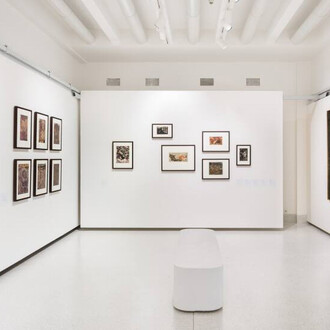Czech art produced after 1930 includes works by František Muzika, Josef Šíma, Jindřich Štyrský, Toyen, Zdeněk Sklenář, Jan Kotík or Václav Bartovský. Furthermore, the permanent collection also explores artistic movements from the 1960s up to the present: Art Informel, Action Art, New Sensitivity and postmodern art.
The ground floor of the Trade Fair Palace, open to visitors all year round and free of charge, houses three periodical projects of contemporary art. These are:
The Moving Image Department: A space devoted to the moving image, presenting works of art via new media technology Introducing: The small Presidential Salon as a place for the youngest generation of artists Poetry Passage: the Functionalist staircase as a three-dimensional poem
Formerly intended for trade fairs, this gem of Czech Functionalist architecture has been the seat of the National Gallery in Prague from 1976. Built in 1925–1928 after the plans of architects Josef Fuchs and Oldřich Tyl, the imposing building was the largest edifice of its kind in the world. First it served the Prague Sample Trade Fairs company and, after the war, it housed various foreign trade companies. The history of the building was dramatically affected on August 14, 1974, when it was nearly destroyed by a huge fire that took six days (until August 20) before being quenched. In 1976, a decision was made to renovate the building; the reconstruction progressed slowly and was finally completed in the 1990s.
















